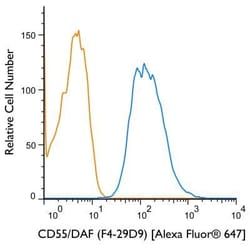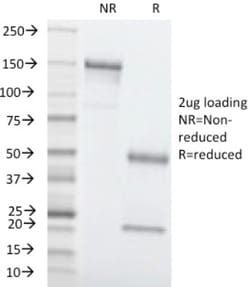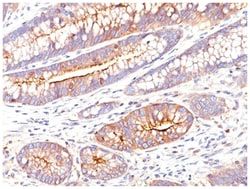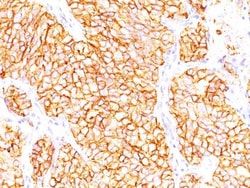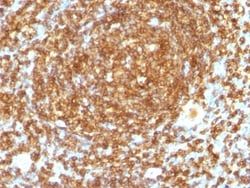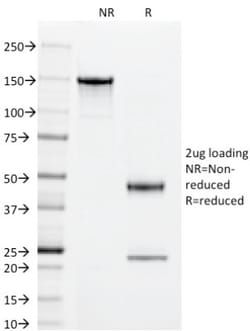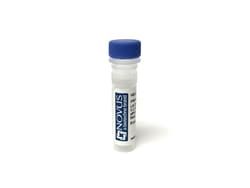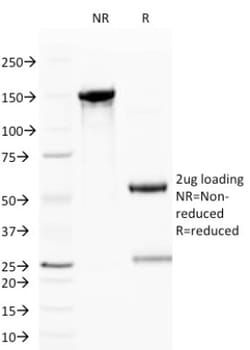CD55/DAF Antibody (143-30), Novus Biologicals™
Mouse Monoclonal Antibody
Manufacturer: Fischer Scientific
The price for this product is unavailable. Please request a quote
Antigen
CD55/DAF
Concentration
0.2 mg/mL
Applications
Flow Cytometry, Immunohistochemistry (Frozen), SDS-Page, Immunofluorescence
Conjugate
Unconjugated
Host Species
Mouse
Research Discipline
Immunology
Formulation
10mM PBS and 0.05% BSA with 0.05% Sodium Azide
Gene Alias
CD55 antigen, CD55 molecule, decay accelerating factor for complement (Cromer blood group), CRdecay accelerating factor for complement (CD55, Cromer blood group system), CROMDAFcomplement decay-accelerating factor, decay accelerating factor for complement, TC
Gene Symbols
CD55
Isotype
IgG1 κ
Purification Method
Protein A or G purified
Test Specificity
Recognizes a single chain glycoprotein of 70kDa, identified as CD55 (also known as decay accelerating factor, DAF). CD55/DAF is widely expressed on cells throughout the body including leukocytes, erythrocytes, epithelium, endothelium, and fibroblasts. It is a Glycosyl phosphatidylinositol anchored (GPI-anchored) member of the membrane bound complement regulatory proteins that inhibit autologous complement cascade activation. It prevents the amplification steps of the complement cascade by interfering with the assembly of the C3-convertases, C4b2a and C3bBb, and the C5-convertase, C4b2a3b and C3bBb3b. CD55 also serves as receptor for CD97 and for echovirus and Coxsackie B virus. The MAb 143-30 can be used as marker for paroxysmal nocturnal hemoglobinuria (PNH).
Clone
143-30
Dilution
Flow Cytometry 0.5 - 1 ug/million cells in 0.1 ml, Immunohistochemistry-Frozen 0.5 - 1.0 ug/ml, SDS-Page, Immunofluorescence 0.5 - 1.0 ug/ml
Classification
Monoclonal
Form
Purified
Regulatory Status
RUO
Target Species
Human
Gene Accession No.
P08174, P08174
Gene ID (Entrez)
1604
Immunogen
PHA stimulated human PBL
Primary or Secondary
Primary
Content And Storage
Store at 4C.
Molecular Weight of Antigen
70 kDa
Description
- Ensure accurate, reproducible results in Flow Cytometry, Immunohistochemistry (Frozen), Immunofluorescence CD55/DAF Monoclonal specifically detects CD55/DAF in Human samples
- It is validated for Flow Cytometry, Immunocytochemistry/Immunofluorescence, Flow (Cell Surface).
